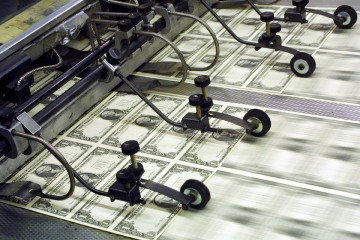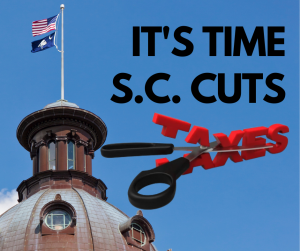 America’s got a massive deficit and debt problem, on that most folks can agree. How it happened, however, is something many aren’t so certain to say. The process of running up a $15 trillion Federal deficit may seem complex and convoluted, but it’s really no more complicated than the average American family swimming in a sea of credit card debt. The same principles are at play, and the same mistakes are made.
America’s got a massive deficit and debt problem, on that most folks can agree. How it happened, however, is something many aren’t so certain to say. The process of running up a $15 trillion Federal deficit may seem complex and convoluted, but it’s really no more complicated than the average American family swimming in a sea of credit card debt. The same principles are at play, and the same mistakes are made.
Government, like most households, finances its spending in one of two ways: income coming in (in the form of taxes for government, like salaries and wages for households) or through the use of debt (Treasury securities for the government, like credit cards, student loans, car loans, etc. for households). The responsible government and / or household strives to make the ends meet by using the income coming in, while striving to stay away from the use of debt instruments; the deficits come when debt is treated like income.
Despite the similarities in principle of private households and the Federal government, there are several major financial differences. The biggest of these differences is the ability of the Federal Reserve to print the money need to pay back the government’s debt obligations. Whereas households actually have to earn the cash they need to pay back their debt obligations, the government just fires-up the printing press. This means that, ultimately, we all pay for fiscal irresponsibility in Washington. Here’s how the debt cycle in DC works: first, Congress blows billions of dollars more every year than the Federal government takes in through tax revenue, then the US Treasury Department issues bonds to securitize the debt (remember, the bond is the credit card of the government), and then the Treasury sells these bonds to investors to raise the capital needed to pay for profligate spending by the Congress.
Now, the question becomes: who buys the bonds? So glad you asked…our friends at the Federal Reserve.
Since the stimulus packages and big government bailouts began back in 2008, the Federal Reserve has been the single largest purchaser of bonds issued by the Treasury. This is a tell-tale sign that investors in this country, as well as abroad, have very little appetite to continue bailing out an out-of-control government in Washington. Additionally, it’s important to point-out that the Federal Reserve doesn’t take-in tax revenue, so they have to come up with the money to buy Treasury bonds somewhere else. Anyone want to guess where? That’s right, they print it! They just make (quite literally in this case) the money they need to buy the bonds. So, the cycle of socialism is the following: Congress blows the money, the Treasury issues bonds to raise money to cover spending by Congress, and the Federal Reserve prints the money needed to buy the bonds from the Treasury. If it sounds nice and tidy, trust me, it’s not.
There have been other governments in modern history that have tried this same sort of scheme, with predictable results. The German Weimar Republic gave it a whirl, destroyed their economy and ended up with Adolf Hitler. The Greeks gave it a go, only to find themselves going down the road to economic oblivion. So, two examples of what not to do that, as I’ve come to expect, policymakers in Washington seem unwilling to heed. Hyperinflation is the inherent result of printing money from thin air, and this is a de facto tax on the American people. Think about it, if the government prints money to pay their own bills, doesn’t that destroy the value of money already in circulation? The answer is yes, and we call that process of monetary debasement inflation. That means that the dollars in each of our pockets are becoming more and more worthless as the printing presses keep printing. This makes everything from corn flakes to clothes more expensive for American consumers.
So, the circle of socialism, wherein an over-promising, big spending Federal government attempts to cover for their financial mismanagement through the printing of cash (it’s less popular than outright tax increases), actually has the same effect as a tax hike. That effect is less purchasing power for American families, which translates into hampered economic demand and sluggish economic growth. I’m in no way advocating tax hikes, but I am suggesting that we start focusing on spending cuts. If we don’t, inflation will make us feel like we’ve had a tax hike…and I think we’re taxed enough already.





1 thought on “The Circles of Socialism”
Comments are closed.